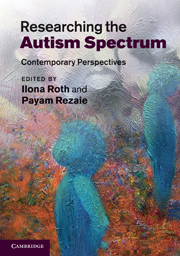Book contents
- Frontmatter
- Contents
- Preface
- Foreword
- List of Contributors
- Introduction
- Part I Classification and Diagnosis
- Part II Genetics, Neurology and Biochemistry
- Part III Cognition, Development and Education
- 7 Psychological models of autism: an overview
- 8 Cognitive flexibility in autism: a social-developmental account
- 9 Language in autism spectrum disorders
- 10 Memory in autism: binding, self and brain
- 11 Measuring executive function in children with high-functioning autism spectrum disorders: what is ecologically valid?
- 12 Autism spectrum disorders in current educational provision
- Index
- Plate section
- References
12 - Autism spectrum disorders in current educational provision
Published online by Cambridge University Press: 04 February 2011
- Frontmatter
- Contents
- Preface
- Foreword
- List of Contributors
- Introduction
- Part I Classification and Diagnosis
- Part II Genetics, Neurology and Biochemistry
- Part III Cognition, Development and Education
- 7 Psychological models of autism: an overview
- 8 Cognitive flexibility in autism: a social-developmental account
- 9 Language in autism spectrum disorders
- 10 Memory in autism: binding, self and brain
- 11 Measuring executive function in children with high-functioning autism spectrum disorders: what is ecologically valid?
- 12 Autism spectrum disorders in current educational provision
- Index
- Plate section
- References
Summary
This chapter examines the research evidence for the learning style in autism spectrum disorders and ways in which this impacts on educational provision. It considers international evidence but has a focus on educational provision in England. The particular and dual role of education is considered and the effects of differences and difficulties in key areas of development (sensory, perceptual, conceptual, motivational, memory, language and social aspects). Key features of learning style and the implications for certain curriculum areas are analysed, including the need for homework support and the notion of a ‘24 hour curriculum’. The pervasive effects of anxiety and stress are discussed, and the factors that influence relationships with peers. The evidence of the value of different kinds of educational placement is also considered and the need for further research in this, and other, areas identified.
The role of education
Given that there is no medical ‘treatment’ for Autism Spectrum Disorders (ASD) and that even the idea of ASD as a medical disorder is problematic (Jordan, 2009), education has a special therapeutic role to play. Children and young people with ASD have the same entitlement as anyone else to acquisition of the culturally valued skills, knowledge and understanding that will enable full participation in their society, but, in addition, they need an education that will enable them to acquire the additional skills, knowledge and understanding that others acquire naturally and intuitively, without explicit instruction.
- Type
- Chapter
- Information
- Researching the Autism SpectrumContemporary Perspectives, pp. 364 - 392Publisher: Cambridge University PressPrint publication year: 2011
References
- 2
- Cited by



